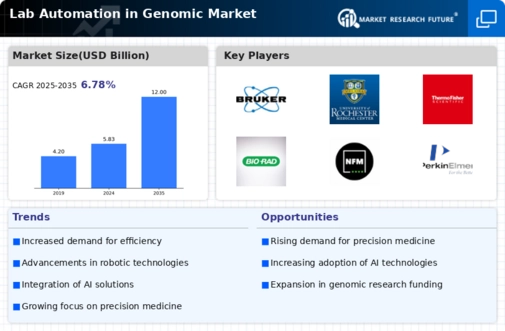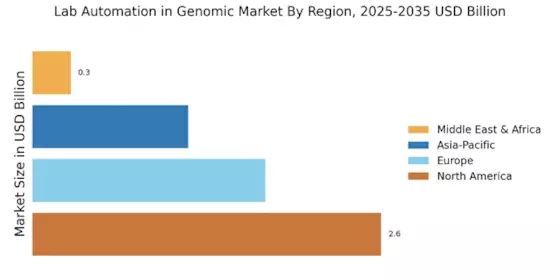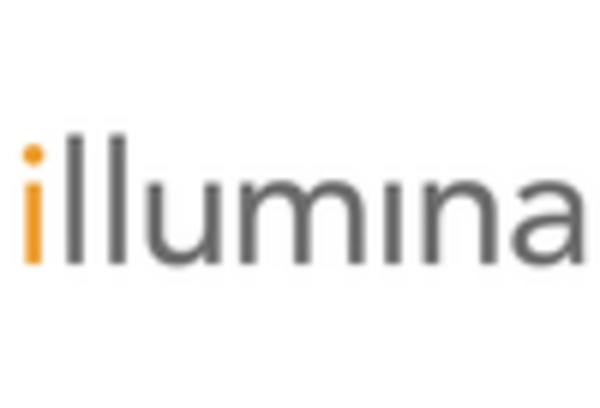The Lab Automation in Genomic Market has seen substantial growth and transformation, driven by advancements in technology and increasing demand for efficient and accurate genomic research. Competitive insights within this market illustrate a landscape filled with innovative solutions aimed at enhancing productivity, minimizing human error, and streamlining workflows in laboratories.
Organizations are innovating around high-throughput sequencing, liquid handling, and robotics that facilitate the handling of biological samples.
The key players in this market continually adapt to evolving trends, regulatory requirements, and shifting customer needs, emphasizing the growing importance of collaboration between technology providers and end-users. As genomic research expands its applications across biomedical and agricultural fields, understanding competitive dynamics becomes essential.
Abbott Laboratories has established a notable presence in the Lab Automation in Genomic Market, recognized for its commitment to delivering state-of-the-art solutions that optimize laboratory workflows. The company excels in the development and integration of advanced automation technologies that enhance the efficiency and reliability of genomic testing and analysis.
Abbott Laboratories utilizes innovative liquid handling systems and robotic platforms, allowing for the seamless processing of large volumes of genomic data. Their strengths also lie in their comprehensive portfolio, which addresses various stages of the genomic workflow, from sample preparation to result interpretation.
This integration of automation solutions positions Abbott Laboratories as a leader in enhancing laboratory efficiency and precision, catering specifically to the demands of genomic research.
Bruker is another key player in the Lab Automation in Genomic Market, known for its robust technological capabilities and focus on innovative solutions that empower genomic laboratories. The company specializes in offering advanced analytical instruments that are critical in genomic applications, providing tools that facilitate high-throughput screening and detailed genomic analysis.
Bruker's commitment to continuous innovation ensures that its automation solutions are at the forefront of genomic research, addressing the specific requirements of accuracy, reliability, and speed.
With a strong emphasis on delivering customized automation solutions, Bruker enhances laboratory efficiency and workflow integration, solidifying its position in the competitive landscape of genomic lab automation. The company's strengths in analytical prowess and customer-centric technology contribute significantly to its growing influence in the market.

















Leave a Comment